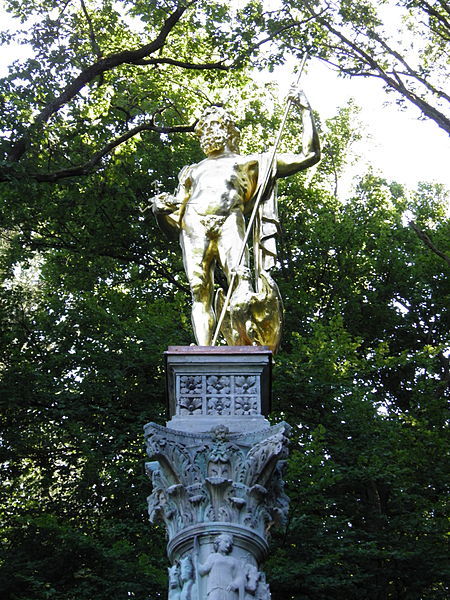A reconstructed Column of Jupiter (Jupitersäule), Saalburg Roman Fort, Limes Germania (Germany) Pho
A reconstructed Column of Jupiter (Jupitersäule), Saalburg Roman Fort, Limes Germania (Germany) Photograph by Carole Raddato, September 2012 via Wikimedia Commons (Source: X) Creative Commons Attribution-Share Alike 2.0 Generic license.Jupiter columns were monuments dedicated to Jupiter Optimus Maximus (”Best and Greatest”) in Germania, eastern Gaul, and Britannia from the mid-second to mid-third centuries CE. They stood from 4 m /15 ft in height to around 15 m/49 ft. The base was usually four-sided, with a deity or hero carved on each side. Above that was a seven- or eight-sided section, carved usually with a day of the week on each side, and the eighth side bearing a dedication or image of the goddess Victory. The shaft was carved with patterns, frequently resembling the bark of a tree, vines, or leaves. The columns were topped by a sculpture of Jupiter; the most usual poses were standing, enthroned, driving a chariot, on horseback, and defeating a giant or a serpent. These depictions could equally reference the Titanomachy or the Gigantomachy, or may represent a local interpretation of the Roman god. A few examples show the god holding a wheel, conflating Jupiter with Taranis, the local thunder god. An altar was placed near each column, and the area was enclosed by a wall.Jupiter columns were erected in towns and on private estates. None have been discovered intact, but a number have been reassembled or replicated in the present day, and set up in museums or outdoors near where they were discovered.Today, September 13, Roman polytheists honor Jupiter Optimus Maximus (the Best and Greatest). It is the anniversary of the dedication in 509 BCE of the Capitoline temple built to honor him. This temple was the most magnificent and lavishly-decorated temple in Rome, and regarded as the most culturally significant. Wars were declared at its doors, and triumphal processions ended there. It was the repository of the Sibylline Books, as well as numerous bronze tablets engraved with decrees of the Senate dating, according to Suetonius, almost to to the founding of the city. Famous paintings and statues were numbered among the decorations, as well as numerous votive dedications and spoils of war. The pediments held sculptural reliefs, a statue of the god in a chariot crowned the roof, and the roof tiles were covered with gold.A public feast was traditionally held for the people of Rome on this date, with statues of Jupiter, Juni, and Minerva (the Capitoline Triad) representing the guests of honor. This feast was part of the oldest public games in Rome, the Ludi Romani (Roman Games), held annually in honor of Jupiter Optimus Maximus. These games included horse and chariot races, boxing and wrestling competitions, and theatrical performances.Ave, Jupiter, Best and Greatest! May you willingly bestow your favor on us, our homes, and our families. May you clear the sky, and preserve the homes and fields of those afflicted by storm. May you improve our nations with justice and stability. May you inspire our leaders in providing hospitality to foreigners and helping the needy. May our offerings and prayers to you never cease! -- source link
#jupiter#jupiter column#religio romana#cultus deorum#roman polytheism
